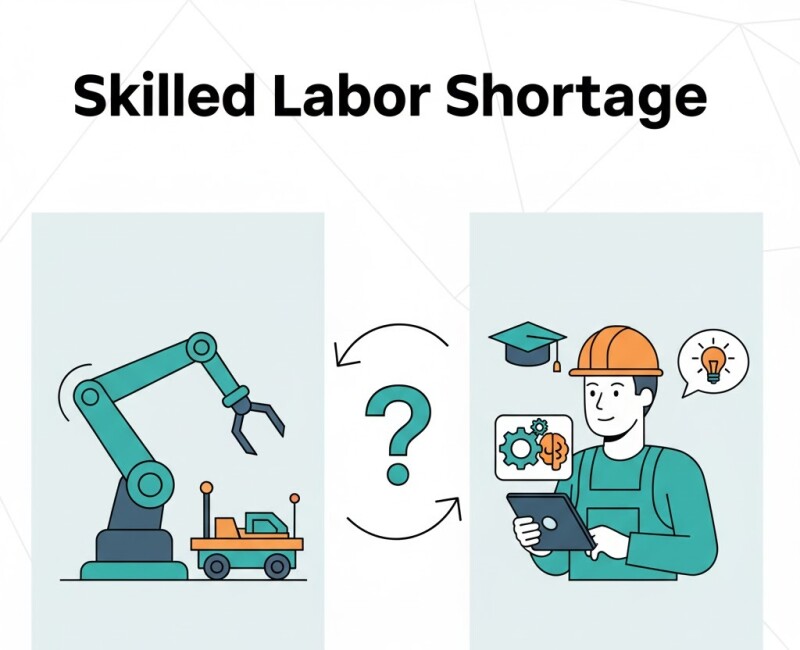Skilled Labor Shortage: Automate or Train?
Manufacturers everywhere face a dilemma — automate more, or train faster. The truth is, sustainable productivity depends on doing both.
1. Automation as a Force Multiplier
Use automation to handle repetitive, low-value tasks so skilled workers can focus on analysis, quality, and preventive maintenance.
2. Training as Risk Reduction
Well-trained staff prevent downtime. Investing in certification and internal mentoring reduces turnover and increases safety compliance.
3. Data-Driven Workforce Planning
- Identify which roles can be augmented vs replaced.
- Use OEE and downtime data to prioritize automation ROI.
- Track skill gaps alongside asset performance trends.
Example
A mid-sized machine builder automated 15% of manual inspection tasks but tripled training hours for technicians. Output rose 20% with the same headcount.
Related Articles
- Upskilling Operators for AI-Powered Plants
- Micro-Learning for Maintenance: 10-Minute Lessons
- Culture Change in Automation: Leading from the Line
Conclusion
Automation amplifies skill — it doesn’t replace it. The factories that thrive will train as strategically as they invest.









































Interested? Submit your enquiry using the form below:
Only available for registered users. Sign In to your account or register here.